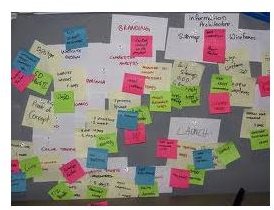Scheduling Reflection Periods for Your Project Team
Why Reflect?
All of us at some point in our lives have paused to take stock of the situation at hand. For instance, we often pause to see if we are heading in the right direction, if our goals are aligned with our actions, and so on.
Reflection periods in project management serve the same purpose. It allows the project team to ascertain whether the tasks completed are in congruity with project specifications, whether the project is on time, delayed or advanced, and whether the works executed so far have met the desired purpose. Identifying mistakes or need for changes early is cost-effective and less troublesome than waiting for someone to review it after much work has been built on the mistake and then changing everything. For instance, a defect in constructing a wall identified immediately after construction is better than identifying the defect after plastering and painting.
Scheduling reflection time for your project team has far wider uses than such stock taking reviews. For one, it helps project teams retain focus. Many people tend to dilute the focus and sense of purpose when they have too many things on their head, and get embroiled in routine activities. Reflection helps to simplify things, and keeps the end in mind. It also allows the project manager to assess the strength and weakness of each team member, and make appropriate changes to work allocations or project team composition.
Reflection time also serves a far more critical purpose than reviews. Very often, initial plans are theoretical estimates. When actual execution starts, such plans may require modifications or tweaking to reflect ground realities. The project team can put the reflection period to good use to revise estimates, especially time and resource requirements for the reminder of the project.
Another important use of reflection period in projects is to review the project scope. Today’s economic environment is in a state of continuous flux, with fast-paced changes the order of the day. Such changes have impact on project management as well, for the project owner might have different requirements than the ones when the project started. Reflection time allows considering scope creep, and if nothing else finds good use to cover the extra ground that scope creep has thrust on the project team.
Regardless of scope creep, uncertainties in the external environment may result in delays of supplies, breakdown of the supply chain or any other disruption, and reflection time serve as precious slack time to allow the project team to catch up with the set timelines.
Even without any of these uses, a reflection period comes as a welcome break for the project team to recharge batteries. At times, a break allows completing the tasks faster and better compared to working non-stop.
Key Considerations

Like all project management elements, reflection works best when structured. Make sure to consider the following aspects during the reflection period:
- Whether the project progress is on track
- Whether the completed work has passed quality expectations
- Key issues that have come up during completed work, and possible resolution
- Whether planed resources and timelines will hold for the remainder of the project
- Review of project scope, especially any scope creep and the extent to which it can be accommodated
- Additional resources required, or changes in resource allocation for future works, to ensure optimal utilization of resources
There is no hard and fast rule regarding what to reflect. It depends on the nature of the project, the quality and availability of the resources on hand, and external and internal circumstances. The project manager remains the best judge to set the agenda.
When to Reflect
Scheduling reflection periods for your project team during the course of a project has its benefits, but the benefits are realized only when done the right way.
The best time to schedule breaks or periods of reflections are at the completion of specific milestones, preferably on the completion of any tangible or substantial section of a project. For instance, the best time to reflect for a software project may be after completion of a particular module, and the best time to reflect in a construction project may be at the completion of a certain stage in the construction process. This allows having definite estimates in place and provides a suitable opportunity to make changes.
There is no hard and fast rule regarding scheduling reflection periods after each element or module of the project. Scheduling appropriate points depends on the specific project, the quality of the resources available, and the fluidity of the external environment. The project manager remains the best judge of the time and extent of the period.
How to Incorporate
Although reflection periods serve to overcome the inadequacies of initial planning, unscheduled reflection periods may wreak havoc with project deliverables. Good project managers factor in time for reflection in the initial project plan, interlacing such sessions between the different elements in the work breakdown schedule.
The entire project team need not reflect together in a single brainstorming session. Reflection may be individual, collective, or a combination of both, involving the relevant team members setting aside routine works and taking time out to review files, assess goals, and engage in meetings or one-to-one discussions to undertake the reflection tasks.
As things stand, scheduling reflection periods for project teams is not common, at least in a formal and structured way. The ease of doing so and awareness of the potential benefits it brings is sure to make it commonplace in the coming days. Taking time away from routine work to codify experiences contributes to both self-enhancement and adding to the corpus of the organization’s intellectual capital.
References
-
Image Credit
-
“Why is ‘Reflection’ so Important to Project Lessons Learned?”
http://www.projectsmart.co.uk/why-is-reflection-so-important-to-project-lessons-learned.html. Retrieved October 10, 2011.
